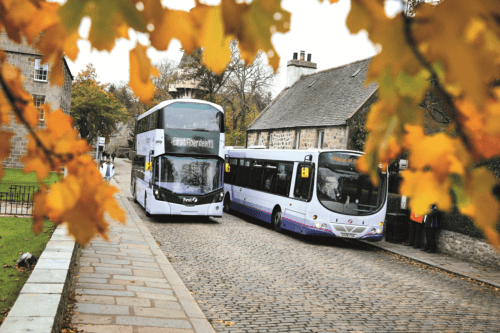
Jonathan Welch speaks to Managing Director of First Bus’ Scottish operations Duncan Cameron to find out about how the company has changed over recent years, and where it sees itself in the future
FirstGroup has seen many changes over the years, and its focus has shifted significantly from its post-deregulation acquisition and growth phase, which saw it enter the rail sector as well as expand abroad with operations including New World First Bus Hong Kong and Greyhound in the USA. Having expanded worldwide, the company retains its headquarters in its home city of Aberdeen, although arguably the control and management of its local bus services has become more centralised in recent years, with senior local management based at the company’s biggest Scottish depot in Glasgow.
Following the much publicised sale of its sprawling Scotland East business to McGill’s in 2022, the company is left with two key city networks; post-Covid consolidation has seen the firm opt to focus its energies on its core city operations in Glasgow and Aberdeen. I spoke to Managing Director of First Bus Scotland Duncan Cameron to find out more about how the business is progressing in a post-Covid world, and what is in store for the Aberdeen and Glasgow businesses in the near future.
[…]By subscribing you will benefit from:
- Operator & Supplier Profiles
- Face-to-Face Interviews
- Lastest News
- Test Drives and Reviews
- Legal Updates
- Route Focus
- Industry Insider Opinions
- Passenger Perspective
- Vehicle Launches
- and much more!


